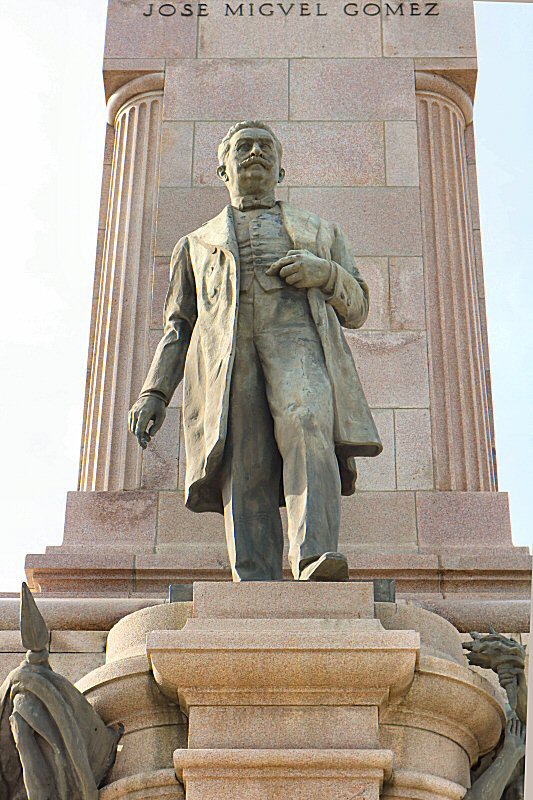

The Monumento a José Miguel Gómez is
located on the final section of the Avenida de los Presidentes
(known also as the street G) in Vedado, where it intersects with
the 29th street.

The Monumento a José Miguel Gómez is
one of the beautiful monuments, maybe the most magnificent one,
adorning one of the main avenues of Havana that connects the
Avenida Salvador Allende to Malecón. The monument was built in
memory of the Major General José Miguel Gómez that took part in
the Liberation Army as high officer and fought for the
independence of Cuba. He was the President of Cuba from 1909 to
1913, succeeding in a lot of works in the modernization of the
country.
The monument is the work of the
Italian architect Giovanni Nicolini. Some says that Nicolini was
inspired by the famous monument of Victor Manuel II, the first
king of unified Italy, erected in Rome in 1910. The monument of
José Miguel Gómez was
inaugurated with a solemn ceremony in 1936. By that time, 15
years had passed since his death and 23 years since the end of
his government. The construction of the monument was estimated
125.000 pesos that was paid by the individuals, contributing up
to 20 cents per person; an event that proves the popular
sympathy that the President had won.
The monument can be accessed by the
stairs at both sides and at the back. The bronze statue of José
Miguel Gómez is placed in the center of a wide semicircle. It
has a height of about 3,5 meters. It stands on a pink granite
pedestal that was brought from Ravenna, Italy. The name of the
general is written on the central obelisk behind the statue,
topped by six bronze figures in heroic positions that represent
the six provinces of the time. On both sides of the statue, you
can see the white marble statues, representing the strength and
the magnanimity. Except the front part, the obelisk is
surrounded by bronze high reliefs that reflects several scenes
from the life of the general during the War of Independence and
the Republic. The Major General is represented looking to the
sea, because he died abroad, despite being Cuban. Two beautiful
sculptural sets are placed at the top, on each of the upper ends
of the semicircle, representing history and time, with freedom
in the center (on the left) and right and law, with peace in the
center (on the right). The monumental complex offers terraces at
different levels and benches to rest and Carrera marble
fountains. The surrounding garden includes some royal palms, the
national tree of Cuba.
